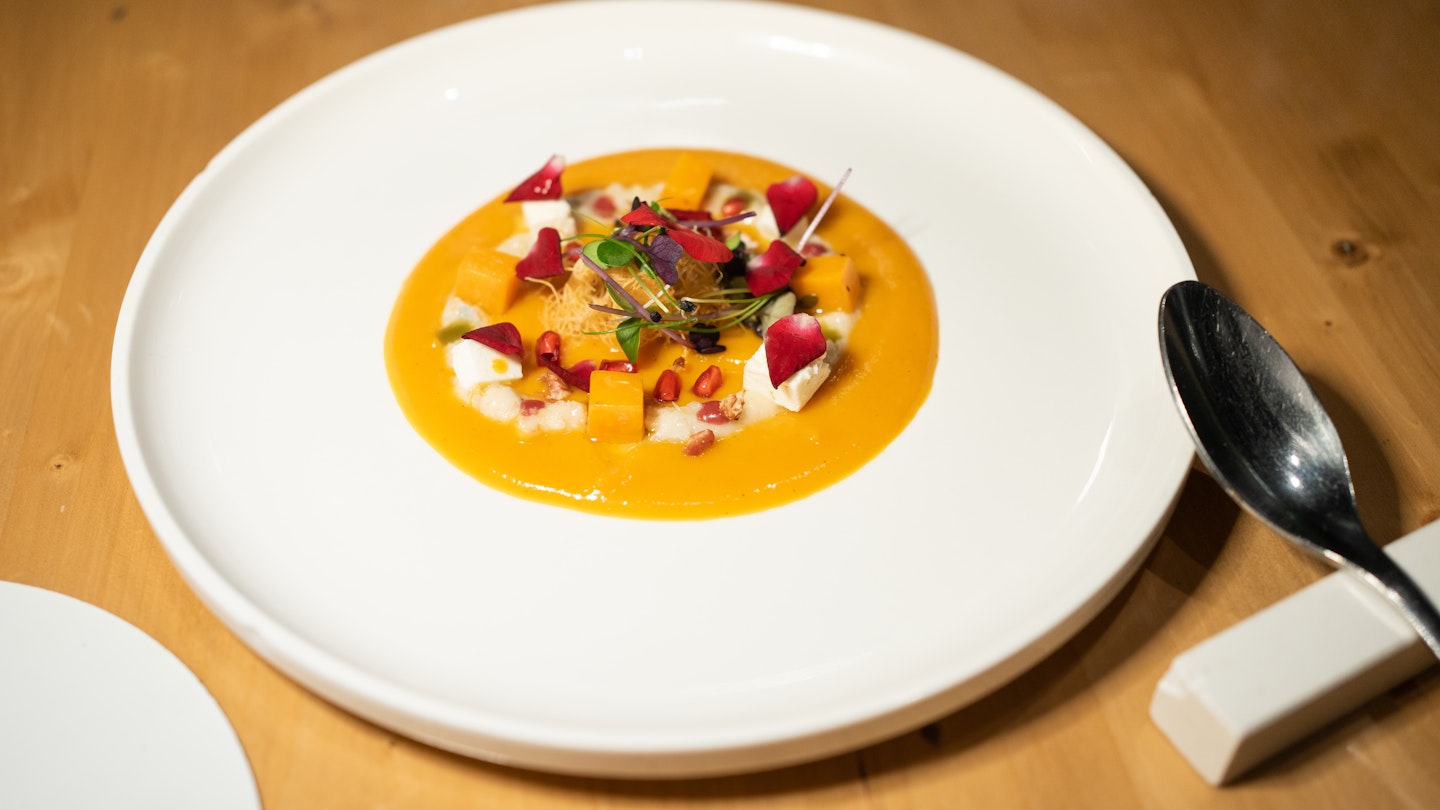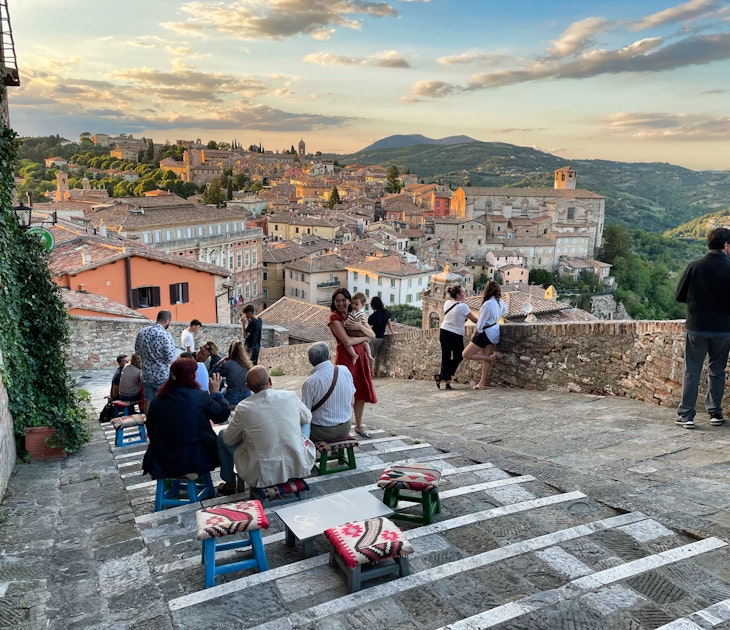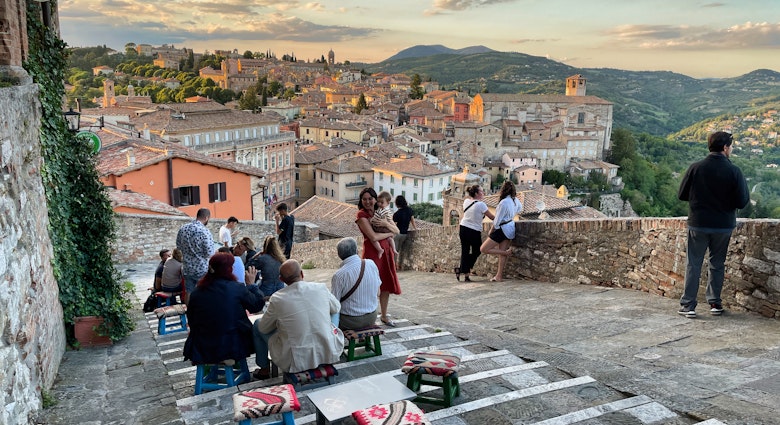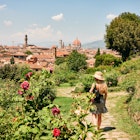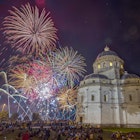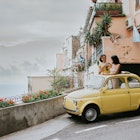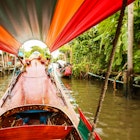Umbria has art, treasures and culinary delights galore but far fewer crowds. Stick around for the annual world-class Umbria Jazz Festival and, in 2023, a region-wide celebration of the life and works of Umbrian renaissance master Perugino on the 500th anniversary of his death.
Virginia DiGaetano calls Umbria home and mapped out this plan to help you fall in love with the region over a four-day trip.
By the time I moved to Italy nearly 10 years ago from my hometown of New York, I’d already lived almost half my life slaying dragons in far-off corners of the world under the deceptively general umbrella of “researcher,” mostly in political science. It took some time for me to stop worrying so much about dragons and finally admit that there was something fascinating about being someplace so unabashedly beautiful. For despite the many hurdles and serpentine snags – or perhaps because of them – Italy is the only place that one can ever live after one has lived in Italy. While I’m quite sure of that now, I wasn’t until I met Perugia.
Best Time to Go
Like all great loves, timing is everything when it comes to visiting Perugia. Depending on when you go, the city changes its colors, sounds and tastes.
Why you should visit Umbria
Equidistant between Florence and Rome, Perugia, the capital of Umbria, feels simultaneously intimate and infinite. It’s a treasure trove for art lovers, a smorgasbord for foodies and just far enough off the beaten path for even the most seasoned traveler to discover something new. It’s also a perfect base to explore the hill towns that make Umbria so wonderful, and it’s filled with culinary and cultural treasures that rival the very best European cities. Importantly, Perugia accommodates a range of budgets while still maintaining the feeling of being accessible to everyone.
Perugia is the city you’ve been looking for, the one you thought you’d already lost; the one you feared had gotten away but had been waiting for you all along.
How to fall in love with Umbria, in four days
Getting oriented in Perugia may take a moment: hill towns can be confusing and this one is no exception. If you’re driving in, keep in mind that most parking facilities are located outside the center, but escalators that bring you to the city center at the top of the hill make it a quick walk (depending on luggage, of course). Many hotels offer private parking facilities, so check with yours before you arrive.
Perugia is linked via train to major cities in Italy – an easy option if you want to avoid the headache of traffic. The train station is located at the foot of the city (hill town!) so to get to the center you’ll need to hop aboard the Jetsons-esque MiniMetro shuttle ($1 a trip; $5 for a day pass). Its squat form is a little wacky looking – yet it’s efficient, clean and runs seven days a week.
Perfection in Perugia
If you’re an early riser, you’ll wake to find the medieval alleyways of the city center teeming with street cleaners at sunrise, rinsing out the remnants of the previous evening. The more time you spend here the more you’ll notice how much life is lived outdoors, regardless of the season: bars spill out onto the pavement, and conversations buzz around the medieval Fontana Maggiore, which has anchored the town center since its completion in 1277. You’ll find yourself returning to that focal point throughout the day, so grab your first (or second) cappuccino of the morning at Turan Cafè in Piazza IV Novembre – and consider your flag planted. If you’re up a little earlier and want to join the street cleaners for a round of coffees, Caffè dal Perugino around the corner at Piazza Matteotti opens even earlier.
No matter where you are in Perugia, you’ll never be too far from the imposing Palazzo dei Priori, the cultural, civic and administrative heart of the city. Its upper floors are home to the National Gallery of Umbria, which holds one of the richest collections of Renaissance art in the world. The galleries cover six centuries and showcase masters like Pietro Vannucci (better known, after his hometown, as Il Perugino), as well as the iconic Polyptych of St Anthony by Piero della Francesca (room 13). The architecture is as stunning as the works on the walls: because the palazzo took almost two centuries to complete, it is a mixture of medieval, Renaissance and Baroque styles.
You could easily spend an entire day in the museum, but by lunchtime you’ll need to get in line with the locals heading into the many restaurants that Perugia has to offer. Whether you want a full meal or a bite on the fly, head to Osteria a Priori, a Slow Food favorite with an intimate dining room and a great selection of local wines, olive oils and other products to bring home with you. Open for lunch and dinner, the restaurant serves specialties such as homemade torte al testo (divine Umrbian flatbreads), unctuous ragù bianco di Chianina (a local breed of beef) and stellar sagrantino di Montefalco red wine, a local favorite. If you need a nap afterward, the Osteria is a stone’s throw from the charming Priori Secret Garden.
Harmony with nature – and plenty of cashmere – in Solomeo
Enjoy a leisurely wake-up and languid breakfast of cornetti and too many cappuccini before heading to Solomeo, less than a half-hour drive from Perugia. Nicknamed the “hamlet of cashmere and harmony,” Solomeo is the birthplace and headquarters of Brunello Cucinelli, known around the world for his superb luxury clothing, and cashmere knitwear in particular. But this is no ordinary shopping trip, and Solomeo is no ordinary town. Instead, Cucinelli has transformed the place into an open-air museum of textiles, and a living ode to beauty, philosophy and nature. Walk through the tiny streets and read the poetry painted onto artisanal tiles, or visit the ivory Monument to Human Dignity in the valley below. And if you’ve got the funds to grab a memory, Cucinelli’s flagship store is a welcoming display of (you guessed it!) cashmere and beautiful taste.
Once you’ve had your fill of harmony (and cashmere), head back to Perugia for a sunset walk and the unmissable Via dell’Acquedotto. An ancient engineering project that once brought water to the Fontana Maggiore, it today connects the centro storico and Porta Sant’Angelo neighborhoods via a narrow, impossibly romantic pathway lined with houses and secret gardens you can gaze into as you stroll. The amber streetlights cast a glow, making it just bright enough to find your way back to the center, along the Corso Cavour, and into the dining room of L’Officina Ristorante Culturale.
Once a workshop for repairing scales, the space is now a tribute to the industry and ingenuity of Umbrian craftsmanship, which is reflected in the menus and wine pairings. Try one of the very reasonable tasting menus on offer: “Land” features classics like rabbit, “Sea” has a fabulous mixed shellfish risotto and “Vegetarian” highlights the wonderful lentils and beans native to Umbria. Finish the day with an amaro di capo in the aptly named Secret Garden bar of the Hotel Priori.
A pilgrimage to Assisi
One of Italy's most popular destinations attracts not only tourists but thousands of religious pilgrims. The hometown of St Francis, Assisi is anchored by a spectacular 12th-century basilica named after one of the Catholic Church’s most important figures. Located less than an hour from Perugia, Assisi is well linked by train, easily reachable by car and even shares an airport with the Umbrian capital. Because of its status, there are often bus tours full of people going to visit – and you never know when Pope Francis himself might drop by.
The entire city of Assisi is a Unesco World Heritage Site, and it won’t take long to see why. The 14th-century Rocca Maggiore castle offers a dramatic panorama of the town and the entire landscape around it, and is worth the considerable climb. Assisi attracts more tourists than almost anywhere else in Umbria and there is no shortage of restaurants, hotels and shops for that purpose. But it remains a site of profound importance to Catholics, and is always filled with pilgrims and followers of the Franciscan order. Keep an eye out for the Tau cross, the distinctive symbol of St Francis, visible everywhere from altars to souvenir shops. St Francis adopted the tau, the last letter of the Hebrew alphabet, as his personal seal, with his followers later using it as a sign of their own devotion. Symbolizing protection and redemption, the Tau makes for a wonderful keepsake of a special place: Tomassetti Arte Sacra has a vast selection of handmade items from olive wood that are all produced by local artisan Marcello Tomassetti.
Though St Francis was a famous ascetic, you don’t have to deprive yourself here, especially in a region with some of the purest thermal water in the world. If you’re in the mood to stay a while, check into Nun Assisi, a luxury spa retreat with a museum of ancient Roman artifacts that show how the sacred waters have been used for more than 2000 years. You can book the spa for a day – but an overnight allows you to eat and sip at the on-site Benedikto osteria, whose extensive wine list of local sagrantino reds and lush trebbiano spoletino whites will make you glad that your bed is not far away.
The rustic charms of Lago Trasimeno
Located less than an hour’s drive from Perugia, Lago Trasimeno is lined by stunningly well-preserved medieval towns, where bird-watchers and fishermen wait silently for their targets to appear. Life moves slowly along these shores, and if you’re looking to unwind you’d have a hard time finding a better place anywhere in the world. The towns of Castiglione del Lago and Passignano sul Trasimeno offer majestic views. And while you’ll hear plenty of different languages and accents mixing in the many bars that line the lake, it never feels like the area has succumbed to mass tourism. Higher up in the hills, Panicale is full of great local shops like Marconi La Bottega, the “biggest little market” in town where you’ll find things like fagiolina del Trasimeno, a bean that grows only near the lake. From panoramic perches like Osteria La Loggetta, you can stare out at the rows and rows of perfectly spaced olive trees; time it right and you’ll be there for the first drops of Umbrian olive oil, which typically emerge at the end of October.
If gastronomy is your passion, the lake will not disappoint. Home to geographically protected foods like saffron from Città della Pieve and gamay grapes, the area is a Slow Food lover’s paradise. It’s so well known for its wares, in fact, that the Strada del Vino Colle di Trasimeno was formed in 1997 to welcome visitors with itineraries that highlight winemakers and their terroirs. Base yourself in Panicale at the newly opened Rastrello (doubles from $250), a boutique hotel and restaurant that also produces its own brilliant olive oil. Each features views over the surrounding area that will leave you speechless.
Want to head to Umbria but wish there was someone to plan this out for you? Let Lonely Planet’s sister company Elsewhere take away some of the stress of planning by connecting you with the best local expert to craft your dream trip.

